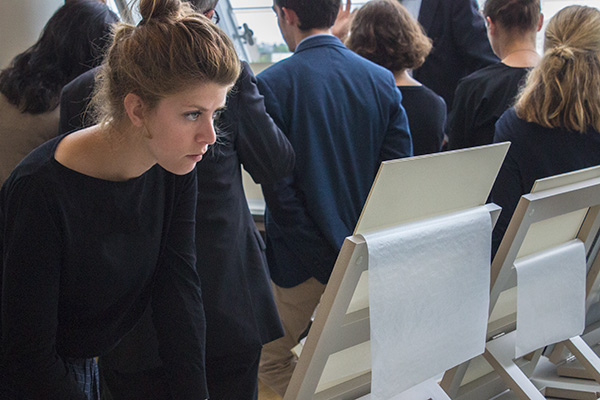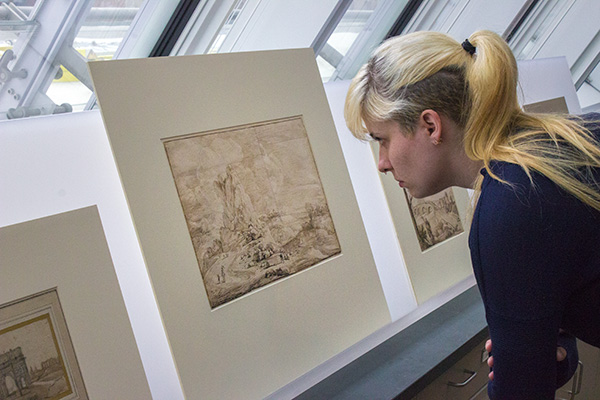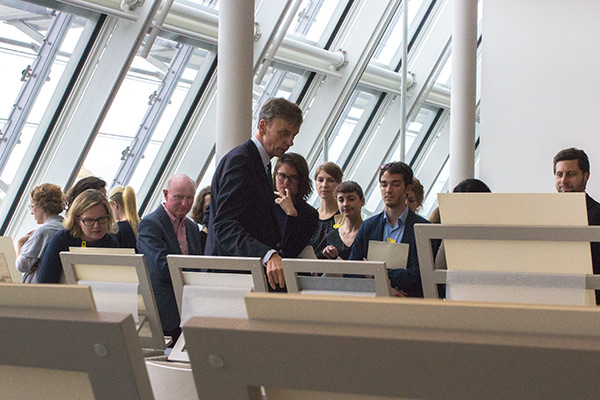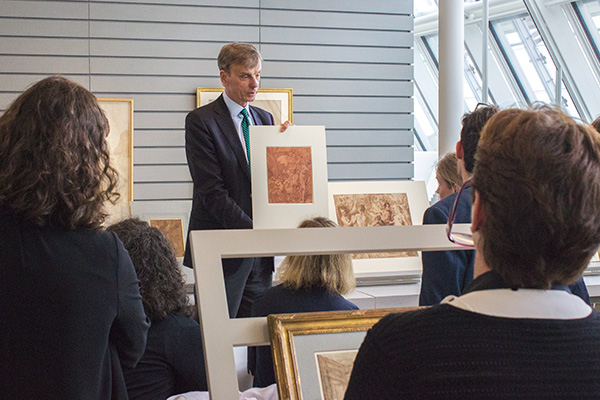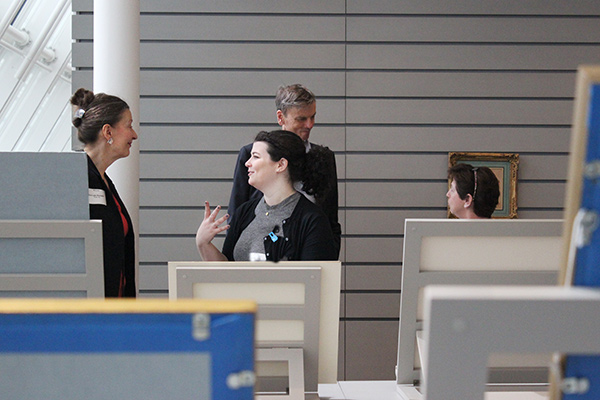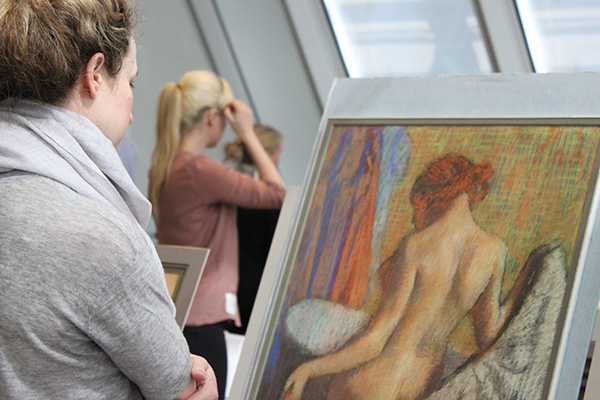The Harvard Art Museums are making strides in educating young drawing scholars, building on the foundation that has been laid over the decades in establishing the museums’ formidable drawings collection, and capitalizing on the success of this summer’s two drawings exhibitions, Drawings from the Age of Bruegel, Rubens, and Rembrandt, and Flowers of Evil: Symbolist Drawings, 1870–1910, which closed on August 14.
A workshop for drawing scholars, Study Days on Drawing, was recently held at the museums, and is just one example of our ongoing efforts. Edouard Kopp, the Maida and George Abrams Associate Curator of Drawings, and Carel Van Tuyll, former head of the graphic arts department at the Louvre and currently a research curator at the Teylers Museum in Haarlem, in the Netherlands, organized the workshop for 16 art history graduate students from across North America and Europe. Over the course of three days, participants heard presentations from and engaged in discussions with curators, conservators, collectors, and outside experts.
“The idea was that the participants would be exposed to different approaches to the study of drawing, ranging from object-based to more theoretical,” Kopp said.
Most of the sessions were held in the museums’ Art Study Center, where the graduate students were able to study dozens of original drawings from the 14th through the 21st century from the museums’ collection. They also toured the Straus Center for Conservation and Technical Studies, and learned about how the work of conservators and scientists can complement curatorial research by answering questions about artists’ working methods, treatment options, and other topics. In the Materials Lab, participants experimented with drawings tools and techniques, including chalks and quills. The group also visited the home of distinguished Boston-area collector (and Harvard alumnus) George Abrams.
“The workshop was designed not only to train these young scholars on how to talk and write about drawings, but also to create a sense of community among the group, in the hope that participants might help each other in their future careers,” Kopp said. He added that workshops like this should be held every few years.
Fortunately, there are multiple ways for visitors to access works from the drawings collection at any time. Drawings are a staple in the museums’ regular collections gallery installations. (Because works on paper are light-sensitive, they need to be rotated often.) Drawings may also be viewed individually in our Art Study Center. “Anyone—not just members of the Harvard community—is able to have works pulled and shown just for them. To be able to look at drawings at length, and even return to see them again if they wish, is a very special thing. It is one of the important ways in which we continue to share our expansive drawings collection,” Kopp said.
A number of upcoming exhibitions will further showcase works from the collection. These include the Spring 2017 exhibition Drawing: The Invention of a Modern Medium, organized by Ewa Lajer-Burcharth, the William Dorr Boardman Professor of Fine Arts in the Department of History of Art and Architecture, and Elizabeth Rudy, the Carl A. Weyerhaeuser Associate Curator of Prints, in conjunction with a seminar they recently co-taught. Another drawings-focused exhibition, curated by Kopp, Rudy, and MIT associate professor Kristel Smentek, is being planned for Fall 2019. The exhibition will address the topic of the graphic arts in Europe in the age of Enlightenment.
As the museums’ drawings collection continues to grow, largely thanks to the generosity of donors such as George Abrams, but also through acquisition, there will surely be even more opportunities to engage with and learn from these unique and varied objects. Exposing both scholars and the public to the drawings collection is vital to Kopp.
“To see incredible works up close makes a huge difference, and it’s something that we want to share with students and the wider public,” Kopp said.
The Study Days on Drawing event was organized thanks to generous support from the Stanley H. Durwood Foundation.

